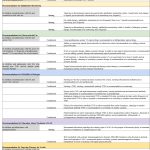Novel JIA Subtypes
Next, Rae S.M. Yeung, MD, PhD, professor of Pediatrics, Immunology and Medical Science at the University of Toronto, Canada, described approaches for identifying novel, biologically based JIA subtypes using computer modeling. She explained the computational approaches were designed to address the challenges of rare diseases, such as JIA, that have heterogeneous phenotypes but small patient numbers. This heterogeneity includes clinical phenotype, response to treatment and clinical course. Fortunately, clues for resolving heterogeneity by including biology exist, and machine learning appears to be successful at deciphering them.
Dr. Yeung and colleagues used computer modeling to classify JIA. Their systems-based approach evaluated the millions of data points available from integrating clinical and biologic data and placed patients into homogeneous categories.1 The study used the Immunochip array to genotype patients with rheumatoid factor (RF)‐positive polyarticular JIA (n=340) and controls (n=14,412).The discovery phase cohort included phenotyped patients who had been followed for up to five years.
The investigators used various approaches to dimensionality reduction, which allowed them to reduce the large number of variables into composite variables. The first approach used principal component analysis, which produced a heat map of the variables that made up each principal component/composite variable. The machine learning approach was completely unsupervised and resulted in meaningful and logical composite variables. Example: Dr. Yeung noted the first principle component comprised pro-inflammatory cytokines, which was best able to describe the most variability between patients. The second principle component was clinical disease activity. The third and fourth principle components described age at, and time to, diagnosis and immune cell populations.
The results of the analysis were very satisfying because “intuitively it makes sense biologically. Intuitively it makes sense from a clinical perspective,” Dr. Yeung said.
Using these composite variables, the investigators clustered patients into new groups that had an enhanced ability to resolve patient heterogeneity. When Dr. Yeung and colleagues titrated the P value of the ability of the variables to the distinguish the patient clusters from each other, they found machine learning outperformed the International League of Associations for Rheumatology (ILAR) criteria and had an enhanced ability to resolve patient heterogeneity. The computational approaches were also able to identify the relationship between clusters and ILAR subtypes, as well as dissect and split the ILAR subtypes based on biology.
Next, Dr. Yeung and colleagues asked if these novel disease clusters could be used to predict clinical disease trajectories. All the patients in their discovery cohort were treatment naive, except for NSAIDs. When they looked at the individuals based solely on ILAR criteria, researchers saw a mixture of patients, some who got better and some who got worse. However, when they split the cohort into groups based on biologically based criteria, they were able to do a much better job predicting clinical course.
The work is well positioned to enable precision medicine, generate knowledge and impact care at the bedside.

